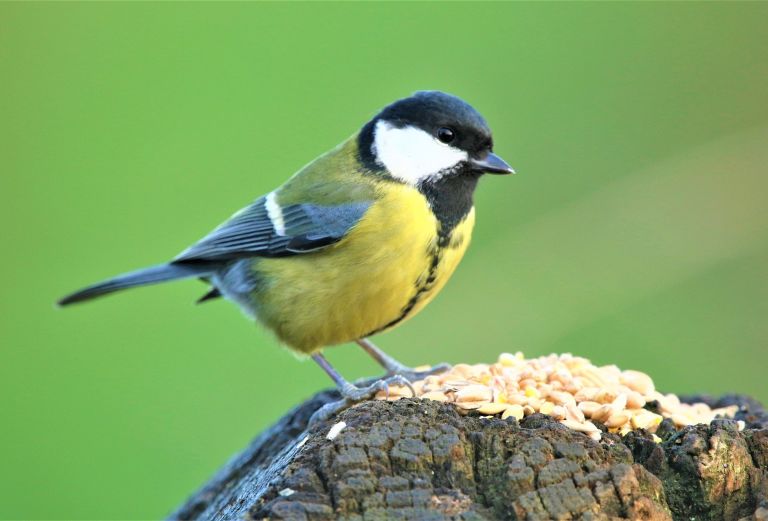
by George Chamier, garden volunteer
This blog was originally published 24 January 2020 but we have amended the final paragraph to update the RSPB Big Garden Birdwatch 2021 dates!
My love of birds started when I was a boy – my mother was keen on birds, and I grew up in the countryside, so was fortunate to grow up with a huge variety of birds. My friends and I used to look for rare birds – the most unusual one I’ve seen in the wild was a capercaillie in Scotland where I grew up. They’re the largest bird the in the grouse family – the males look rather like a small turkey, while the females are about half their size.
I’ve lived in Fulham for 14 years now, and feel very fortunate that this is such a great spot for birds. Fulham is located on the river, which brings many birds into London and means that I get to see all kinds of water birds! When you combine Bishop’s Park, Fulham Palace and the Fulham Palace Meadows Allotments, we have a large amount of green space in one area, making this part of Fulham a small oasis. Having the Wetlands Centre just across the river doesn’t hurt either!
I’m not an expert by any means (particularly when it comes to types of wading birds and gulls, which can be really hard to tell apart!), but I love to keep an eye (and ear) out wherever I am.
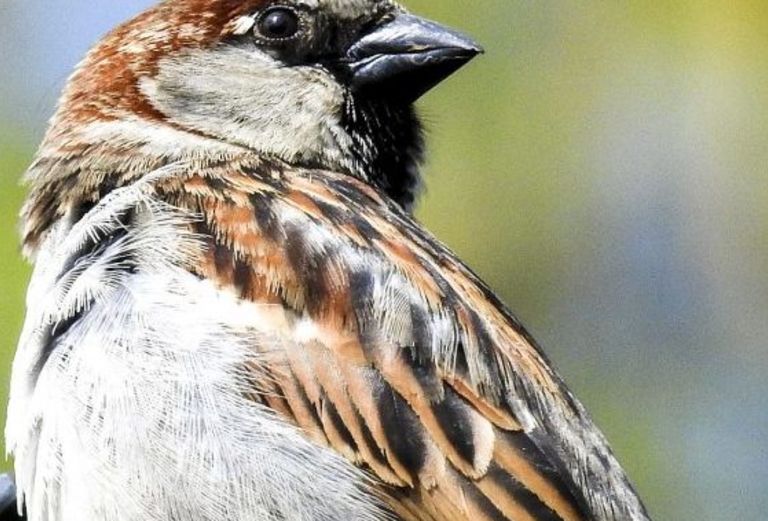
Sparrows in the 60’s
I’ve been volunteering at Fulham Palace for around eight years now, and have seen a huge variety of birds in the Palace’s grounds. A couple of years ago, Lucy, the Palace’s head gardener, knew of my keen interest in birds and passed on a letter from Peter Strangeman, who lived in Fulham in the 1960s and 70s. He was a keen bird watcher himself, and had published articles in the London Bird Report about the birds in Bishop’s Park and Fulham Palace.
He passed on his notes from the birds he’d seen in the area during this period, and I’ve been able to use these to compile a comparison – to see how birdlife in this area has changed over the last 60 years.
Comparing Peter’s research and mine, I could see a significant drop in the number of sparrows and starlings. In January 1964 Peter counted 591 sparrows and 92 starling nests. Now there are practically none; I’ve never seen sparrows in the Palace’s grounds or in Bishop’s Park and I’ve only seen starlings flying overhead, never feeding on the ground in this area.
This change isn’t limited to Fulham – The British Trust for Ornithology has said that the number of starlings has dropped by 66% since the mid-70s, and starlings are now semi-endangered in Britain.
No one really knows the reason for the huge drop in numbers – it has been suggested that it could have been caused by a virus, or perhaps a lack of insect food for the birds’ young.
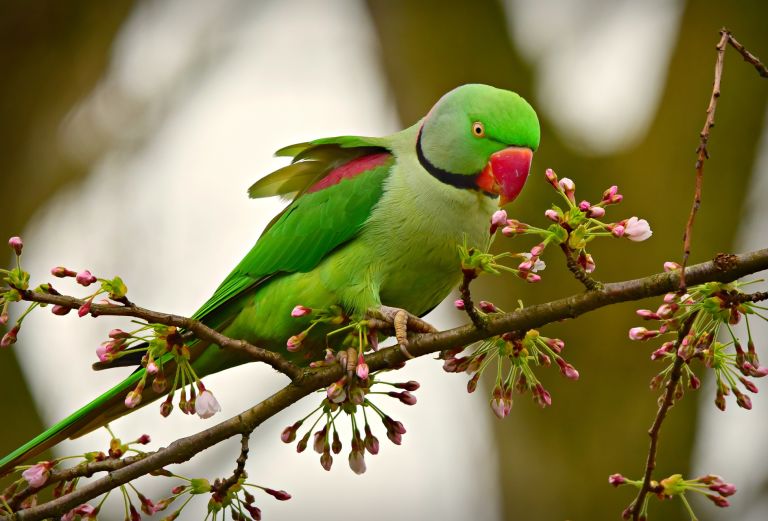
Feral parakeets
A rather exotic addition, which didn’t appear in the area until just a decade or two ago, are parakeets. Now, I often see the green flashes of colour from their bright plumage near the Bishop’s tree in the Palace’s garden, or helping themselves to seeds from the feeders at the All Saints end of the site.
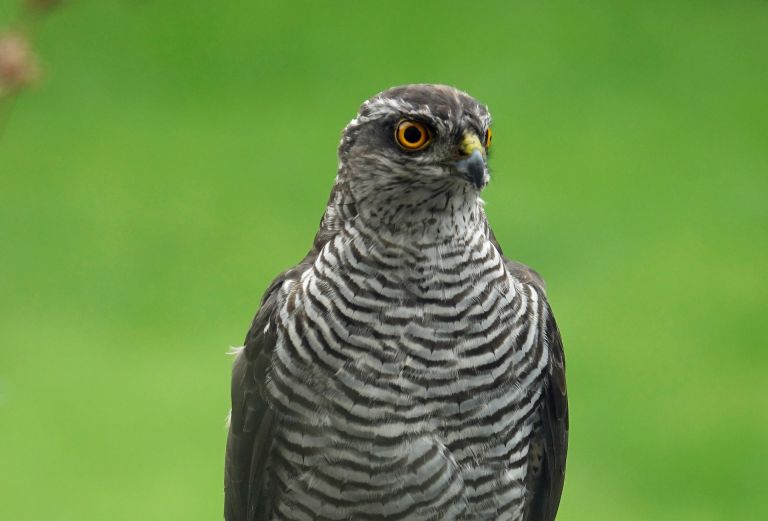
A success story
Sparrow hawks are one of the great success stories of the last couple of decades. They were in great trouble because DDT (a pesticide which was previously widely used, but was banned in 1984) had a huge effect on birds. The pesticide accumulated in birds, and birds of prey were particularly susceptible to high levels of DDT. The shells of the sparrow hawks’ eggs became thin and brittle, and they broke when they sat on them in the nest. However, their numbers are now rising, and in the past few years I’ve seen a sparrow hawk nesting nearby.
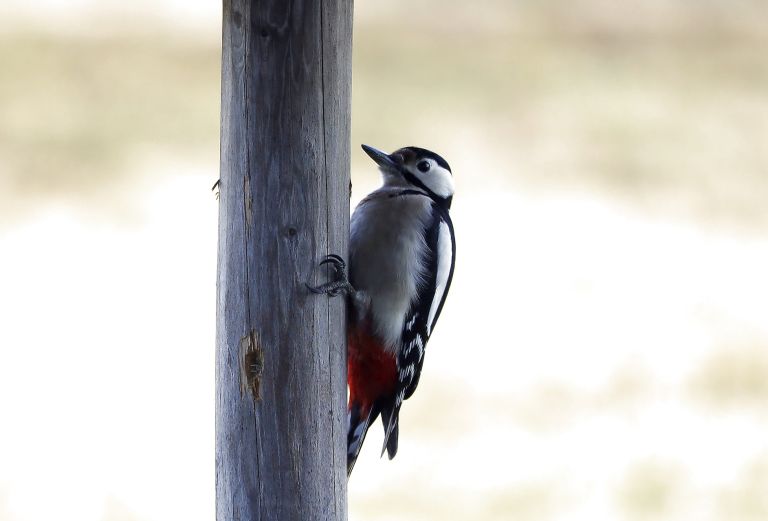
Knock knock
Strangeman only spotted woodpeckers flying over in the 1960s and 70s, but we’ve definitely got some now – I sometimes hear the ‘yaffle’ of green woodpeckers when I’m in the garden, and a pair of greater spotted woodpeckers nested in the Bishops’ tree a few years ago – if you look at the top of the tree you might be able to spot the hole they made for their nest.
Take a look
Keep an eye and an ear out next time you’re here – as we move into spring you’ll start hearing much more song from birds as they start to look for a mate. Here are a few you should be able to spot on any given day:
Nuthatch – you may not spot this lovely russet and grey bird, because they spend most of their time high in trees, but you’ll be sure to hear their distinctive song call, a sharp ‘zit’!
Robin – robins love gardeners! They treat us as they once did wild boar in the woods – as soon as they see us working the soil they come over in the hopes that a worm or two will be brought to the surface.
Parakeets – Parakeets love the Palace’s garden, you can usually see them perched on one of our feeders or in one of the trees – they’re much easier to spot when the trees are bare in the winter.
Great tits and blue tits – we’ve made special bird boxes for them, which are up around the garden – see if you can spot birds investigating them as potential homes this spring.
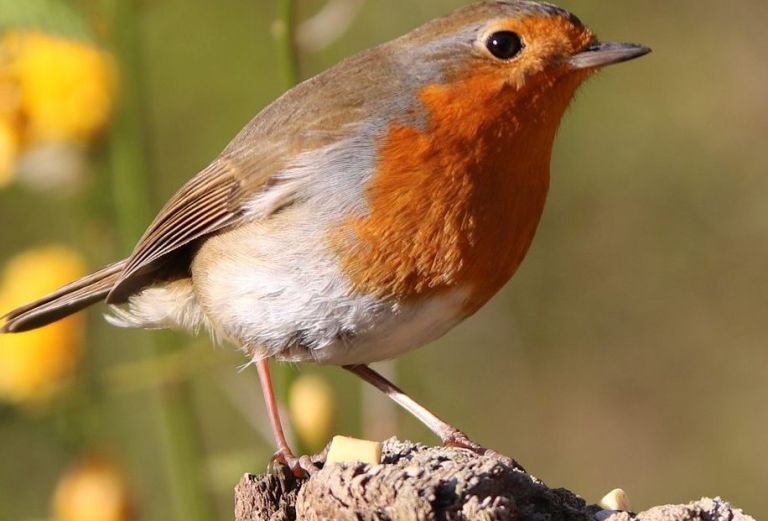
Get involved!
If all this talk of birds has made you want to start looking – you’ll be pleased to know that you can take part in a survey yourself. Every year at the end of January the RSPB carry out a nationwide survey of garden birds to get a better picture of the birdlife of the country. Get involved this weekend (29 – 31 January 2021) by watching your garden or local park for an hour and noting the birds you see – find out more on the RSPB’s Big Garden Birdwatch page.